The Tiger Who Came to Tea
£4.00£7.99 (-50%)
The classic picture book story of Sophie and her extraordinary teatime guest has been loved by millions of children since it was first published more than fifty years ago. Now an award-winning animation!
The doorbell rings just as Sophie and her mummy are sitting down to tea. Who could it possibly be? What they certainly don’t expect to see at the door is a big furry, stripy tiger!
This warm and funny picture book story is perfect for reading aloud, or for small children to read to themselves time and again. First published in 1968 and never out of print, it has become a timeless classic enjoyed and beloved by generations of children.
The magic begins at teatime!
‘A modern classic.’ The Independent
“It’s no surprise Judith’s work is still popular. It owes nothing to the vagaries of style or fashion. Her warmth and humanity are timeless.” Michael Foreman
Judith Kerr’s book ‘The Tiger Who Came to Tea’ was a Sunday Times bestseller w/c 10-07-2023.
Read more
Additional information
| Publisher | HarperCollinsChildren’sBooks (23 Feb. 2018) |
|---|---|
| Language | English |
| Paperback | 32 pages |
| ISBN-10 | 0007368380 |
| ISBN-13 | 978-0007215997 |
| Reading age | 2 – 4 years, from customers |
| Dimensions | 28 x 0.4 x 22 cm |

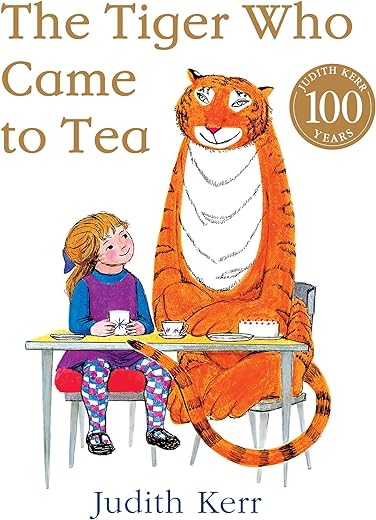
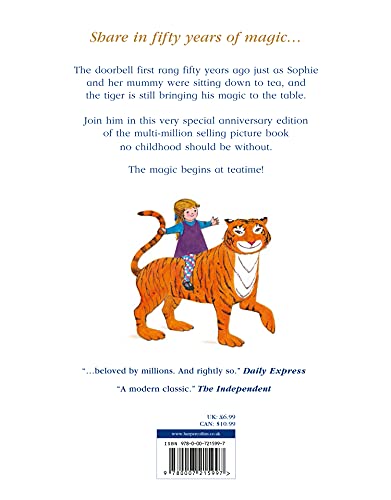
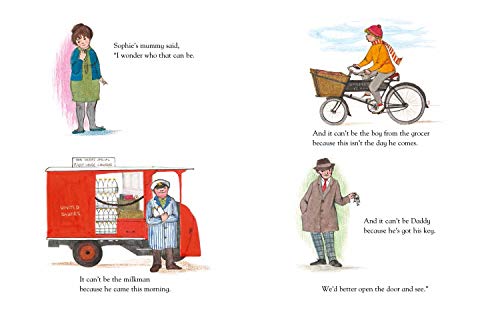
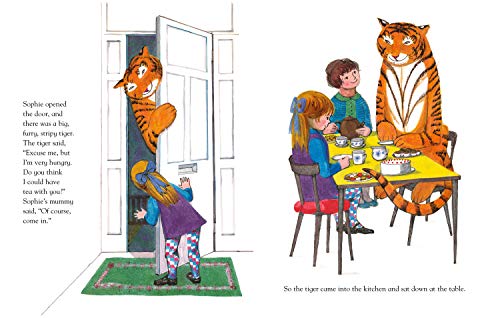
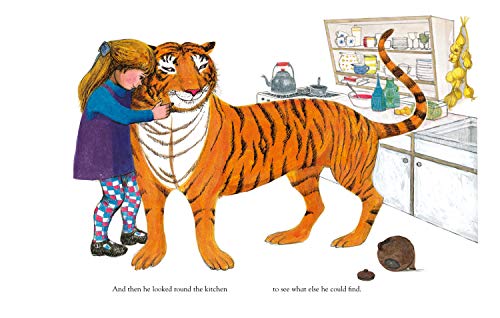
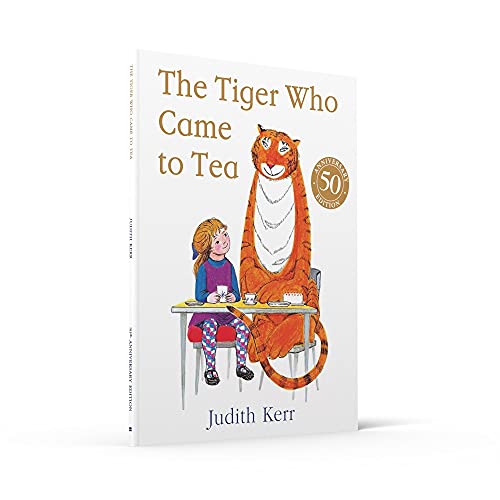


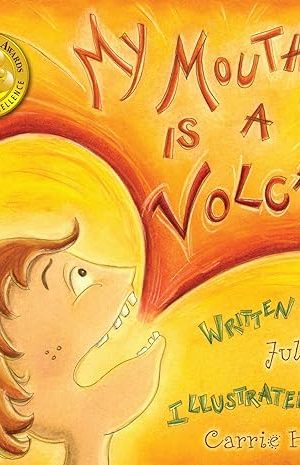


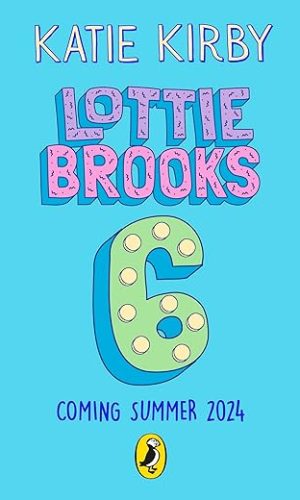

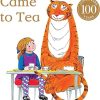
by Sabellius
Judith Kerr tells the delightful picture book story for the under-5s of a tiger who invites himself to tea with Sophie and her mother and eats them out of house and home before leaving, never to return. The story is told in the third person from the point of view of an omniscient narrator. But as we shall see the story is really Sophie’s story. It is Sophie’s imaginative interpretation of what we may suppose “really happened”. It is told in her language and within the limitations of her understanding.
Through the “willing suspension of disbelief” as Coleridge described the phenomenon by which a reader enters into the imaginative world of a writer, the notion of an English speaking tiger being invited into someone’s home and consuming a large quantity of food and drink is perfectly reasonable and acceptable. It is, however, a basic tenet of all fiction that the world created by an author should be logically coherent. The reader must be able to recognise that what happens in the story is possible within the parameters of the story if not in actual reality. Anything not consistent with the internal logic of the story is either a mistake or a clue to something else going on. There are several such “mistakes” in The Tiger Who Came to Tea. But these mistakes turn out, on closer inspection, to be authorial clues, first to the fact that the story is the product of Sophie’s imagination and, secondly, to enable the reader to reconstruct, partially at least, the story behind the story. The events in the story if told from the mother’s point of view would have been rather different, and mundane.
The first clue that all is not what it seems occurs when it is said that the tiger drank “all the water in the tap”. This strange expression can be interpreted to mean simply that the tiger drank a large quantity of tap water directly from the tap in the kitchen sink. However, after the tiger has left and Sophie is preparing to have her bath it is stated that she couldn’t have a bath because “the tiger had drunk all the water in the tap”. This is clearly impossible. There would only have been no water if the local water authorities had turned off the supply but there is no reason to suppose this to have been the case. In the child’s imagination it must have seemed as though the tiger had drunk so much that there could not possibly be any water left for a bath.
The second clue is a visual one. Daddy decides that the family should go to a local café to eat. Sophie is already dressed only in her nightdress ready to go to bed, but instead of putting her day clothes back on, she merely puts a coat over her nightdress and a pair of wellingtons to go out on what appears to be a chilly autumn evening. This is too improbable to make sense. It is a clue that the visit to the café occurs only in Sophie’s imagination. There is further evidence for this when we are told that the meal consisted of “sausages and chips and ice cream”. This is a child’s idea of a “lovely supper” but does not seem a likely menu for a family dinner. This is the third clue.
The fourth clue occurs the following day. Sophie and her mother go shopping and among the items they purchase is “a very big tin of Tiger Food”. Of course, there is no such thing. If it were possible to buy a tin of tiger food from the supermarket or corner shop, it would imply that semi domesticated tigers are a commonplace in the world created by the author but that would undermine the basis on which the story is founded, viz. that a tiger coming to tea is unique and surprising.
The other clues are, first, the language used which is clearly a child’s way of speaking, for example, “Daddy’s beer’; the frequent use of the conjunctions “and” and “but”, and even the onomatopoeic “Owp!” Secondly, there are pictures that do not fit the text of the story. Before the story even begins we see Sophie riding on the back of the tiger in broad daylight. This does not happen in the story but indicates what the child imagines.
From the clues the author has provided we may suppose that what really happened was that a stray cat came to the door – perhaps the one in the picture of the family walking to the café that looks like a miniature tiger – and they let him into the house and fed him. This simple incident was exaggerated into Sophie’s imaginative story. The tin of tiger food is just a tin of cat food, in case the creature came back. The pictures where Sophie is showing affection to the tiger perhaps indicates that she is lonely as an only child and perhaps with few friends.
If there is a hidden message in the story, it is definitely not aimed at children. There is no authorial voice saying more or less explicitly, “You should behave like the good little girl in my story”. The message is perhaps aimed at the grown ups and is, “Don’t inhibit children’s gift of imagination”. The parents in the story accept Sophie’s version of events without quibble. Reality can wait.
by Amazon Customer
Lovely story.
by jade
Loved this book when I was a child and now I have bought it for my own child and he loves it
by Laura
The media could not be loaded.
This is one of our regular pre-bedtime stories because it’s a balanced combination of calming and engaging. The illustrations are colourful and detailed, full of nostalgia, with lots to look and point at for the little ones.
The story is my favourite part, and I’ll never sick of it, coming from a parent who has read this innumerable times now. I love how matter of fact the narrative is, almost comedic at points, making you just accept the events as they unfold. I think that’s why this is one that’s stood the test of time, as it doesn’t really need a morale, or underlying message, nor a large overarching story, but just a funny anomaly set within what is otherwise a very normal family household scene.
The sentence structure is short and simple, and I can imagine my daughter learning to read with this book sometime in the near future.
We bought the board book version, which has stood the test of time (2 years so far) with very little wear and tear despite being handled regularly. The cover and pages feel like they have an almost protective sheen to them, which I feel is a good thing (compared to some other board books where the corners start to fray very quickly).
All in all, only happy memories associated with this book, and not a bad thing to say about it.
by miche
My little girl loves this story she knows every word that’s how much she loves this book, it’s her favourite.
by Amazon Customer
Book sells itself.
It’s a great story, full of lovely pictures.
by Gillian L
The story and pictures still work a bit of magic
by Erica
Was a fun bedtime story but wouldn’t have guessed that ending.